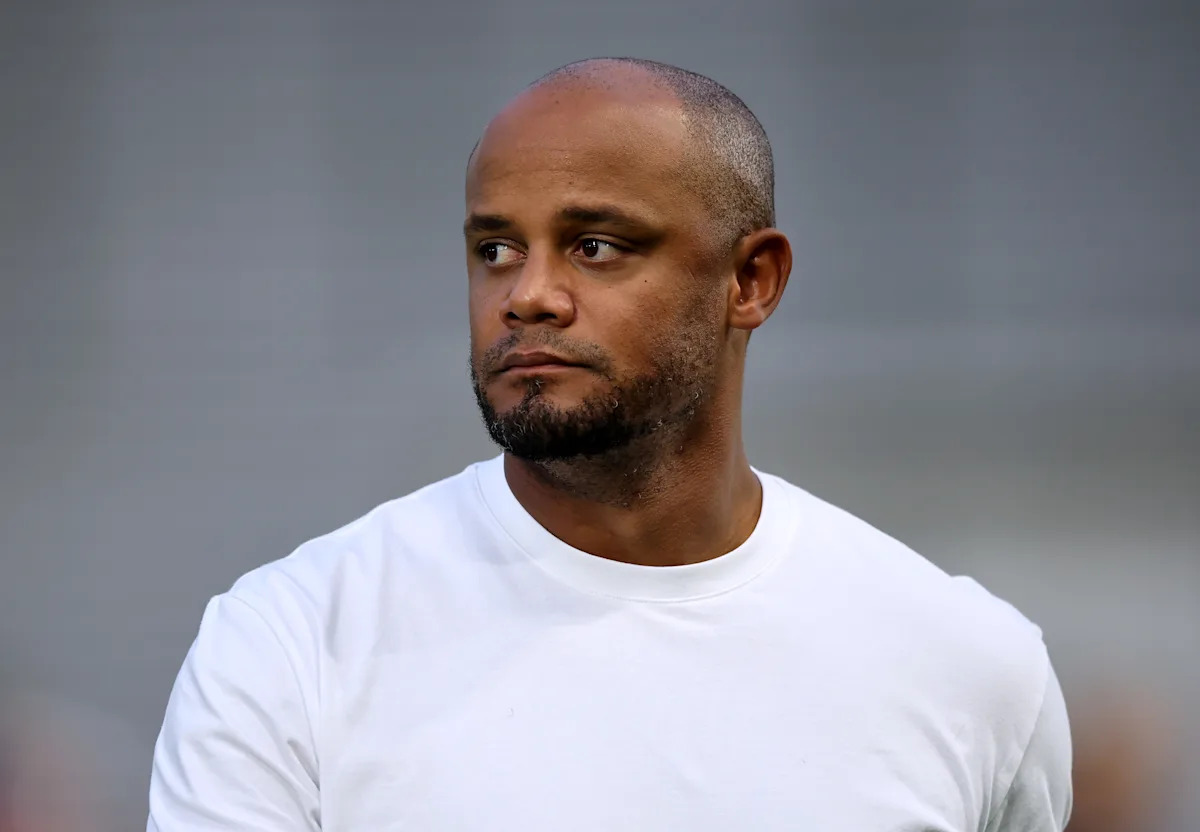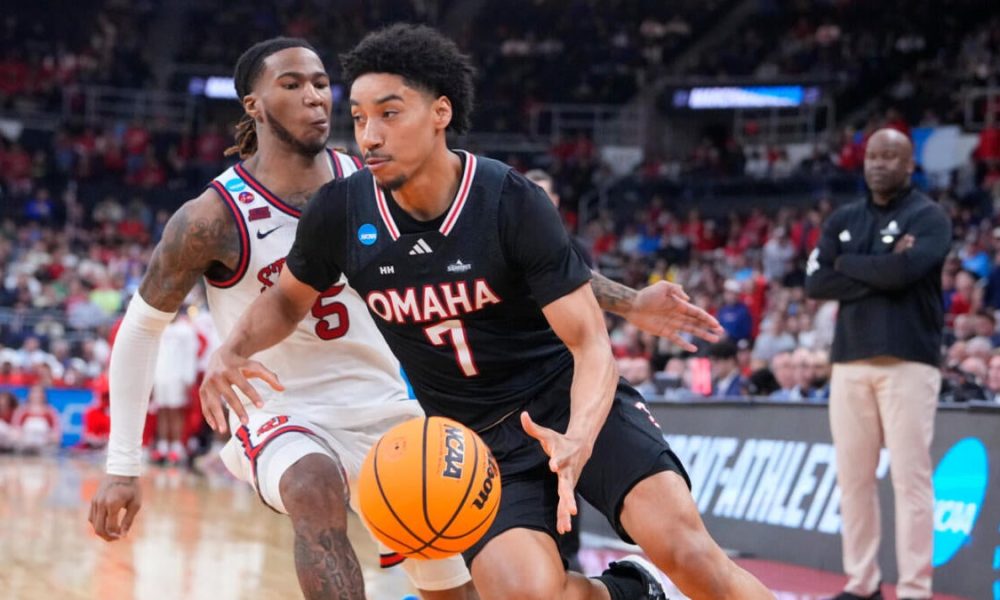
Rec Sports
Jo-An (Plaistek) Parente Obituary – The Providence Journal

A beloved daughter, wife, mother, grandmother, aunt, great-grandmother, friend and companion, Jo-An Parente, 85, passed away peacefully on June 20, 2025, surrounded by her family in East Greenwich, RI.
While Jo-An filled all of her roles with great love, if you asked her who she was at her core, she would answer “a dancer.” From age 8 to 84, she entertained and taught hundreds through her talent for ballet and tap. Born on July 25th, 1939, to Wanda and Frank Plaistek, she attended Woonsocket High School, spent summers studying ballet in New York City, and went on to graduate from the University of Rhode Island (URI) with a degree in Business Administration. While in college, she met her future husband, Robert Parente, and together they raised three children in Cranston, RI. Jo-An was heavily involved in supporting youth sports and St. Paul’s parish events, while serving as an elementary school teacher at St. Timothy’s in Warwick, RI, where she received a “Best Teacher” recognition. She passed on her love for dance to her daughter Linda and her granddaughters, and upon retiring to Jupiter, FL, she was an active member of The Coquettes, a renowned tap dance group that entertained seniors throughout the Palm Beach area. Wherever and whenever there was music playing, she could be seen dancing a few steps and inviting others to do the same. She enjoyed traveling, reading, and perusing the Wall Street Journal cover-to-cover every day. Throughout her life, she worked tirelessly to ensure her family and friends were cared for, always offering a helping hand and an ear to listen if someone was in need. She simply loved making people feel good. This was her greatest legacy.
She is preceded in death by her parents and husband of 48 years, Robert A. Parente, Sr.
She is survived by her three children: Linda Parente (Armin Kososki), Robert Parente (Sue), and Peter Parente (Hope); her grandchildren: Laura, Melissa, Ryan, Lucy, Robert, Peter, Georgia, and Henry; her great-grandchildren: Roman, Lucy, Charlotte, and Thomas; her sister-in-law Carolyn King, nephews Kurt King (Lisa) and Jason King, and niece Allison King (Svenja); her caring companion of more than 10 years Bill Pyrczak, and many cherished friends.
Calling hours will be held on Monday, June 23rd from 4 p.m. – 7 p.m. at Jones-Walton-Sheridan Funeral Home, 1895 Broad Street, Cranston, RI. Family and friends are invited to attend Jo-An’s funeral mass on Tuesday, June 24th, at 10 a.m. at St. Paul’s Church, 1 St. Paul Place, Cranston, RI.
The family extends its deepest gratitude to the staff at The Seasons in East Greenwich for their compassion and the wonderful care they provided during Jo-An’s time there. In lieu of flowers, memorial contributions in Jo-An’s name may be made to The Seasons East Greenwich, 5 Saint Elizabeth Way, East Greenwich, RI 02818.
Posted online on June 21, 2025
Published in Providence Journal
Rec Sports
Undocumented in LA

The Trump administration’s laser focus on identifying and uprooting people without legal status in Los Angeles has disrupted normal life in whole swaths of the city since June.
Corridors typically alive with street vendors have been quiet. Volunteers have been monitoring Home Depots for federal agents. And across the region, some people are staying home from work and school, afraid they may encounter ICE agents.
That this is a fractured and frightening time in the region for immigrant communities is undisputed.
Getting a fuller picture of people without legal status who live and work here is more complex.
To better understand our communities and neighbors, LAist looked into what we do and don’t know about Angelenos without full legal status.
Who gathers this information?
The U.S. Census conducted every 10 years is supposed to be a head count of everyone living in the country at that moment in time — and agnostic on their immigration status. The population count affects a whole range of things, notably how political representation is determined and how federal dollars are allocated.
Since 1960, the Census has not asked respondents about their citizenship status. An effort to add that question in 2020 by the first Trump administration was met with significant pushback. Critics said it would have a chilling effect and depress participation of non-citizens and their relatives — ultimately leaving us without a full count of who lives here.
Still, the government keeps estimates of the number of people living in the U.S. without authorization. Academics and organizations also do the work of counting the people living in the U.S. without legal status. Their research offers a closer look at the many people who are undocumented in L.A. and the surrounding area.
More than 9% of people in LA County are undocumented
Recent research from the USC Equity Research Institute looks at L.A. County specifically, estimating nearly 950,000 undocumented immigrants live here. That’s more than 9% of people in the county who lack legal status.
When researchers widen the lens to include people who are undocumented or living with an undocumented family member, that number jumps to nearly 20%, or almost one in five people.
To compile their estimates, USC researchers use surveys conducted by the U.S. Census Bureau, take the number of non-citizen immigrants and remove the people that have legal status, according to Prof. Manuel Pastor, director of the Equity Research Institute. The latest data they used is from 2023.
The results indicate the depth and breadth of the impact of ramped-up immigration enforcement in L.A. this summer. Masked federal agents have detained parents, people who have been in the U.S. for decades, and even some U.S. citizens.
“ I think it’s useful for Angelenos to realize how ubiquitous it is to be without documentation,” Pastor said.
Immigrants in California by the numbers
California has more immigrants than any other state — around 10.6 million people out of a total population of more than 39 million in 2023, according to the Public Policy Institute of California.
Most immigrants in California have legal status. More than half are U.S. citizens, according to California officials. In 2022, 83% of immigrants in California either were citizens or had other legal residency status, such as a green card or a visa.
Estimates of exactly how many undocumented people are living in California vary. The Department of Homeland Security estimated 2.6 million unauthorized immigrants were living in California.
According to Pew Research Center, in 2023, California was home to around 2.3 million immigrants without full legal status. That number includes people in a variety of situations, including those with some level of legal protections, like asylum applicants, DACA recipients, and people who have been granted temporary protected status.
California is home to the largest cohort of DACA recipients in the nation. As of 2024, more than a quarter of the around 538,000 active recipients of Deferred Action for Childhood Arrivals live in California, according to government data. That status protects undocumented young adults who were brought to the U.S. as children from deportation and allows them work authorization.
People without full legal status in California have a wide range of national origins. Nearly half of the state’s undocumented population is from Mexico, according to a report from the Bay Area Council Economic Institute and UC Merced. The vast majority of that group — 80% — have been in the U.S. for more than 15 years.
In recent years, more people have arrived in the state from Central America and Asia. The report attributes the shifting demographics of new arrivals to improved economic prospects in Mexico and growing economic and political instability in Central America and countries like China and India.
A growing population
The Trump administration ran on a campaign promise of mass deportations, in part in response to a rise in immigration to the U.S. after the COVID-19 pandemic.
Estimates of exactly how many undocumented people are in the country and how that number has changed vary. According to the Pew Research Center, the number of unauthorized immigrants in 2023 was 14 million, up from 10.5 million in 2021 — a 33% increase.
By comparison, California’s unauthorized population grew around 23% in that time period, according to Pew’s estimates. In 2023, the state was home to around 2.3 million undocumented immigrants, a bump of around 425,000 compared to 2021.
The increase specifically in Los Angeles was even smaller around that same time period — 15% according to USC’s Pastor.
“We did not get the gigantic influx of shocking new immigrants that the rest of the country did,” Pastor told LAist. “We got some, but mostly they went to other parts of the country.”
Focusing on LA County
USC estimates that 948,700 people in L.A. County are undocumented, out of a total population of 10.1 million. Most people without legal status have been in the U.S. for more than a decade, according to those estimates. Some 73% arrived in the country more than 10 years ago, while 18% of people have been here for 31 years or more.
Most undocumented immigrants in L.A. County — 83.8% — are Latino. The next largest group is Asian Americans, who make up 10.6% of the county’s undocumented immigrants.
Where are people from?
The largest share of undocumented immigrants in L.A. County come from Mexico, followed by Guatemala and El Salvador. USC estimates that more than 343,000 Mexican people without legal status live in the county.
A share of L.A.’s undocumented population are Indigenous migrants from Mexico and Central America, but the number is difficult to estimate, according to USC. According to a separate report from the Equity Research Institute and advocacy group CIELO, the county is home to at least 24 Indigenous migrant communities, including Zapotec and K’iche’.
Chinese people make up the fourth-largest group of undocumented people by ancestry, according to the report. That estimate is 32,600.
Who is being targeted for deportation?
As the federal government has ramped up deportations across the country, it has made a particularly visible effort here in L.A.
Federal officials have defended the enforcement actions, saying they’re targeting people with criminal records.
LAist found that as an average since last October, only about 18% of those detained in California ICE facilities have had any criminal convictions.
Mixed status families
Hundreds of thousands of U.S. citizens in L.A. County live with family members who are undocumented — more than 863,000 according to USC estimates.
Those numbers are particularly striking for children. More than half of citizens living with undocumented family members are younger than 17 years old. In the county, 20% of children under the age of 5 have at least one parent who does not have legal status.
As federal immigration raids in Southern California have separated workers from their families and children, many left behind are struggling with making ends meet and paying rent. Eighty percent of undocumented immigrants in the county are renters.
“With fears around ICE raids and the possibility that undocumented workers may choose not to show up for work, there is also a great risk of missing rent payments and becoming even more vulnerable to losing housing,” the USC report reads.
Economic contributions of undocumented workers
The vast majority of undocumented immigrants in L.A. County are of working age: 90% are between 18 and 64. Just 1% are 65 or older, according to USC’s data.
The report points to the major role undocumented workers play in the local economy. According to USC’s estimates, 37% of cleaning and maintenance workers and 25% of food preparation and service workers in L.A. County are undocumented.
The industry with the highest percentage of undocumented workers is construction (40%), which is already experiencing a labor shortage and will be key to rebuilding parts of the county destroyed in the January fires.
Immigrants without legal status in the county also contribute billions in taxes. In 2023, USC estimates undocumented immigrants paid more than $3.7 billion in federal, state, and local taxes.
Jordan Rynning contributed to this report.
Rec Sports
Two Wilson Students Form Organization To Combat Sudden Cardiac Arrest – The562.org

The562’s coverage of Long Beach Wilson Athletics is sponsored by Joel Bitonio, Class of 2009.
Two Wilson High School students are working to address an issue that often goes unnoticed until it’s too late: sudden cardiac arrest in young athletes.
Alexis Torres and Emmalie Arzate, both student-athletes and members of Wilson’s student athletic training staff, recently founded the Hearts on the Field Foundation – a nonprofit dedicated to improving cardiac safety in youth sports.
For Arzate, the mission is deeply personal. Her cousin passed away earlier this year due to cardiac arrest, a tragedy that reshaped how she saw the condition.
“That really opened my eyes,” Arzate said. “I knew about cardiac arrest before, but I never understood how deep and devastating it could be until it hit home. It made me want to learn more and find ways to prevent this from happening to other families.”
Torres, who serves as Board President and Executive Director of the organization, said that he’s always wanted to do something with purpose.
“I’ve always wanted to make an impact on my community,” Torres said. “This is such an important issue that doesn’t get enough attention. People know sudden cardiac arrest is serious, but many don’t know how extensive the problem really is. Our goal is to change that through education, prevention, and action.”
According to the American Heart Association, sudden cardiac arrest is the leading cause of death in young athletes during sports activities. While considered rare the condition is devastating with studies estimating between one in 40,000 and one in 80,000 athletes dying each year.
The risk has drawn growing public attention in recent years following high-profile cases, including Los Angeles Lakers player Bronny James, who suffered cardiac arrest while at USC, and Buffalo Bills defensive back Damar Hamlin, who collapsed during a nationally televised game. Those incidents highlighted both the dangers of the condition and the importance of immediate medical action.
Although Hearts on the Field is still in its early stages, the founders have already taken significant steps. They are registered as a nonprofit in California and are pursuing official 501(c)(3) status. Their mission is to save lives by promoting education, encouraging early recognition of symptoms, improving access to automated external defibrillators (AEDs) and advocating for comprehensive cardiac safety programs in schools and sports organizations.
To support their vision, Torres and Arzate brought together a team of current Wilson students and recent alumni to help lead the effort with current students Alesandra Rocha, Emma Jade Garcia, Leticia Tovar and Wilson alums Malayah Terry and Jessica Medrano.
Together this group is working to shape Hearts on the Field into a sustainable organization with long-term impact.
The organization’s future includes offering free CPR and AED certification classes to athletes, coaches, and even team captains. Torres explained the reasoning behind this approach using his own experience on the cross-country team as an example.
“I feel that if the team captain knows CPR that can provide an extra protection,” Torres said. “They’re the ones that are with the team 24/7. They’re the first ones to notice when something’s wrong.”
The group’s immediate financial need is $300 to complete the 501(c)(3) application, but Torres and Arzate emphasize that fundraising is a much broader goal. They hope to secure funding not only to cover startup costs but also to expand programming and provide life-saving training across the community.
“It hasn’t been easy,” Torres said. “We probably should have asked for more guidance along the way, but we’ve managed to figure things out. Right now, our biggest hurdle is fundraising so we can become fully registered and start expanding our programs.”
Despite the challenges of launching a nonprofit, both co-founders continue to balance their school and athletic responsibilities. Torres is enrolled in an EMT program at a local college while also completing dual-enrollment coursework, and Arzate remains active as a golfer at Wilson.
Torres and Arzate hope that Hearts on the Field will outlive their time in high school. They envision expanding into colleges, creating chapters across different campuses, and building a network of student leaders who can continue the work.
“Of course, it’s a big dream,” Arzate said. “But we want to reach as far as possible. Right now, our focus is student athletes, but ultimately this can impact anyone, anywhere.”
To help cover start-up expenses and raise awareness, the group has already scheduled fundraisers, including local restaurant events in September. Their first fundraiser will take place on September 19 at Raising Cane’s location at the Traffic Circle in Long Beach.
For more information about the organization or how to help visit heartsonthefield.org.
Rec Sports
Youth integration still a challenge for Bayern Munich

Last season, Bayern Munich coach Vincent Kompany was criticized for not using more young players last season, but so far during this campaign, the head coach has show at least some willingness to integrate the kids into his squad.
Per Tz journalists Philipp Kessler and Mano Bonke (via @iMiaSanMia), last season was a campaign for Kompany to rely on his veterans to guide the team, but 2025/26 should represent more opportunity for young players to break into the senior squad:
In his first season, Vincent Kompany relied almost exclusively on experience. The squad was structured in a way that every position was filled with established players, therefore there was no chance for the young players to make their breakthrough. This season, however, the squad is smaller and the starters are clearer. The young players will fill the gaps in the squad and therefore get more playing time. This plan is supported by Kompany. The motto is to show more courage and give young players their chance.
However, it could be hard to continue effort to integrate youngsters when Kompany has not been impressed by any of the current crop of Bayern Munich II players:
What’s striking is that almost no player from the second team has impressed Kompany so far. That hasn’t gone unnoticed by the club’s management. Not only is the club’s failure to achieve promotion last season in the Regionalliga viewed with criticism, the style of play the club has chosen for its future (high pressing and possession football) has also not been implemented in the second team.
It seems that Bayern Munich II could be going the way of Class AAA teams in Major League Baseball’s system, where it is becoming more prevalent that youngsters make the jump from Class AA (in this case, Bayern Munich’s youth teams) to MLB rather than spend time in Class AAA. If so, Bayern Munich might need to think about its approach with roster building for the second team:
The group of talented players, who regularly train with the first team, traveled to the Club World Cup, and recently impressed in preseason (Lennart Karl, Wisdom Mike, etc), have been promoted directly from the U17s and U19s – who reached the youth championships semifinals with a style of play that the club wants for the future. Sporting Director Christoph Freund and the respective youth coaches, Patrick Kaniuth and Peter Gaydarov, among others, recommended these talented players to Kompany. This trend was initially criticized at the Campus. The general consensus was that older talents were being overlooked in favor of younger ones. But the atmosphere has since improved, as the talented younger players made better use of their chances with the first team.
The entire club could be headed into a period of transition next summer, so to re-think the roster for Bayern Munich II and the objectives for that squad could be another item on the agenda to be addressed.
Bayern Munich is back in action this week and a tough slate of games lies ahead. Before we tackle all of that, though, there is much to unpack from Germany’s international break and the explosive performance from Uli Hoeneß on SPORT1-Doppelpass over the weekend.
Advertisement
Let’s get into all of that more on this edition of the Bavarian Podcast Works Show! This is what we have on tap:
-
Let’s talk about the good, the bad, and ugly from Germany’s international break performances vs. Slovakia and Northern Ireland.
-
Julian Nagelsmann is in a make-or-break period with Germany.
-
Does the DFB need to think about bringing in Jürgen Klopp to overhaul the entire organization.
-
Uli Hoeneß says Bayern Munich was the real winner of the transfer window and that Nicolas Jackson needs to get 40 starts for the obligation to buy clause to activate.
-
Chuck quickly addresses Philadelphia’s return to the spotlight (for all of the wrong reasons).
-
It’s time to turn focus back to Bayern Munich.
Rec Sports
How Utah’s Olympic organizers will spend $200M-plus just donated – Deseret News
For four-time Olympic speedskater Catherine Raney Norman, what’s most important about the more than $200 million in donations just announced for Utah’s next Winter Games is the impact it’ll have on getting kids involved in sports.
“It’s absolutely critical and instrumental,” said Raney Norman, who was key to the massive fundraising effort as the vice president for development and athlete relations for the Organizing Committee for the 2034 Olympic and Paralympic Winter Games.
“Even back in the bid phase, our big piece was about how we elevate our communities and our youth. This is kind of a culmination, this is the starting point,” she told the Deseret News. “We’re on the starting line and we get to move forward with some of our programs.”
As chair of the bid committee during Utah’s campaign to host a second Olympics and Paralympics, Raney Norman pitched what was being called “Project 29,” a plan to bring Olympic sports opportunities to children in each of the state’s 29 counties during the lead-up to 2034.
Just what programs will be offered now that Utah is hosting again remains to be seen, but they are expected to involve partnering with existing organizations already connecting youth to sports in the state.
“We are still early on,” she said. “We’re still formulating exactly what that’s going to look like. But without the support of our donors, without the support of our community champions, it wouldn’t be possible.”
The long-track speedskater whose career included competing in Utah’s 2002 Winter Games, knows firsthand that early involvement in sports can make a significant difference in a young person’s life.

“One hundred percent,” Raney Norman said. “Whether they’re dreaming (of going) to the Games or they have an opportunity to participate … we know that sport helps kids long term, throughout their entire life.”
The new president of the International Olympic Committee, Kirsty Coventry of Zimbabwe, has also addressed the need to ensure young people benefit from Utah’s upcoming Games, especially since they were awarded earlier than the usual seven years out.

“With the earlier election more than nine years ahead of your Games, you have a tremendous opportunity. We encourage you to use the full power of the (Olympic) rings to nurture your youth,” Coventry said in a video message played Monday at a reception for Utah donors.
She also urged organizers to “develop winter sport even further and radiate beyond your borders across the nation and the world.” Utah’s bid committee heard a similar message about expanding their reach from the IOC inspection team that visited the state last year.
Fraser Bullock, the organizing committee’s president and executive chair, said early on that much of the donor revenue will be used to cover the cost of what’s now fewer than a dozen employees as well as making annual rental payments on Olympic facilities operated by a nonprofit.
The contributions, which are spread out through 2034, are the organizing committee’s only source of revenue until after the next Olympics in the U.S., the 2028 Summer Games in Los Angeles, to avoid competing for sponsors.
The $4 billion budget for staging the 2034 Games does not include any state or local tax dollars, although federal assistance is anticipated for security as well as some transportation costs. Earlier this year, the amount expected from donors was nearly doubled, to $300 million.
Bullock said there are “pockets of money” budgeted for youth sports and education programs.
Raney Norman said there are also some early programs set to be launched soon, including a service initiative with the Granite School District’s education foundation set to be announced at the 2025 U.S. Olympic and Paralympic Assembly being held in Salt Lake City later this month.
She said educational programs are still in the planning phases, but organizers are “chomping at the bit to get those launched,” although that likely won’t be until 2027.
Rec Sports
Oskaloosa YSF to Host “Old Shoe Game” Cancer Awareness Fundraiser – Oskaloosa News

OSKALOOSA, Iowa — The Oskaloosa Youth Sports Foundation will hold its annual “Old Shoe Game” on Sunday, September 21, 2025, at 1 p.m. The community event will take place at 498 North 2nd Street in Oskaloosa and will combine football, food, and fundraising to support the fight against breast cancer.
The matchup will feature Osky1 versus Osky2 in a youth football contest. Beyond the game, attendees can take part in a silent auction, enjoy a free-will donation lunch provided by Fat Meats’ Carey Legvold, and sample specialty drinks from Untamed Nutrition and Sammy’s Healthy Energy Hub. Organizers noted that silent auction items will be accepted up until the day of the event.
Funds raised from the event will benefit Mahaska Health’s breast cancer programs. Donations are being made in honor of Adam Eischen‘s mother, Sherri Krause, who overcame breast cancer, and in memory of his wife, Elonda Eischen, who lost her battle with the disease. The event highlights the themes of hope, strength, and courage while supporting local health initiatives.
T-shirts for the fundraiser are available through September 11 at 11:59 p.m. via the YSF Online Shop at ysfbeatcancer.itemorder.com. Those unable to attend may contribute through Venmo at @oskyysf with the comment “HOPE.”
For more information, residents can contact event coordinators Erica and Stephen Silvers at 641-670-0609 or by email at oskyysf@gmail.com

Osky YSF Youth Football Game Fundraiser (Allesha Landgrebe- Witt photos)

Osky YSF Youth Football Game Fundraiser (Allesha Landgrebe- Witt photos)

on Sep 10 2025. Filed under Events, Local News.
You can follow any responses to this entry through the RSS 2.0.
Both comments and pings are currently closed.
Rec Sports
Albany Independent Fair returns with fireworks, frog jump – Athens County Independent


ALBANY, Ohio — While it already feels like fall, fair season isn’t quite over — the Albany Independent Fair returns next week, Sept. 17–21, for its 131st year.
The fair will take place at 5201 Washington Road in Albany. It is one of only seven independent fairs statewide.
Albany Independent Fair Director Jill Montle said in an email that the fair serves “as both a celebration of community and a bridge between generations.” The fair provides an annual reunion of sorts, where people reconnect with one another, cheer on local youth and celebrate youth projects.
“Whether it is grandparents watching their grandchildren show animals, neighbors chatting at the concession stand, or friends meeting up at the demolition derby, these moments strengthen the fabric of our community,” Montle stated.
This year, the Albany Independent Fair will offer two new events, Montle said.
At 6 p.m. Friday, Sept. 19, the fair will host its first ever frog jump contest, with prizes for both junior (under age 18) and senior (adults) divisions. The frog jump contest will consist of racing frogs; each contestant brings a frog to compete in a race. It costs $5 to enter the contest; local frogs only.
“This new event is being held in honor of Richard and Eydie Akers, a family with deep ties to the Albany community who loved both the fair and a good competition,” Montle stated.
Also on Friday, Sept. 19, the fair will put on a fireworks show at 9 p.m. during a pause in the antique tractor pull.
“We had hoped to launch fireworks in 2024, but due to dry weather and a burn ban, they had to be postponed,” Montle explained. “The best seats will be in our grandstands—but please note there will be no parking on the highway for safety reasons, and this will be strictly enforced.”
Montle said she is most excited about the frog jump this year, as well as the truck and tractor pulls.
“I also really enjoy watching our youth exhibit their livestock projects, because I know the hard work, responsibility, and dedication that goes into them,” Montle added.

However, Montle said, the fair’s must-see event is its Sunday parade.
“This long-standing tradition brings together so many pieces of our community — floats, antique tractors, horses, the Alexander Marching Band, youth sports groups, visiting royalty, and of course, plenty of candy!” Montle stated.
Unlike the Athens County Fair, the Albany Independent Fair is produced by an independent agricultural society, rather than a countywide organization.
“Independent fairs … typically serve a community, town or group of townships rather than an entire county,” Montle explained.
“Albany’s youth exhibitors do not have to be tied to a 4-H or youth organizations to participate in our fair, they only have to reside in or attend the Alexander Local School District,” she said.
Montle said the Albany Independent Fair “has an incredible small-town charm that makes it unlike any other.”


“Our fairgrounds may be modest in size, but that’s part of the magic — it creates an intimate, welcoming environment where you’re never a stranger,” Montle said. “If we don’t already know you, you can bet we’ll go out of our way to make you feel welcome.”
Ticket prices (including rides)
- Daily admission: $10.
- Youth membership: $12.
- Adult season: $23.
- Adult membership: $25.
Schedule
For the full schedule, visit the Albany Independent Fair’s website.
Wednesday, Sept. 17
7 p.m.: Baked goods and champion banner auction.
7:30 p.m.: Fast Traxx motocross.
Thursday, Sept. 18
6 p.m.: Rabbit and poultry show.
7 p.m.: Truck and tractor pull.
Friday, Sept. 19
6 p.m.: Antique tractor pull.
9 p.m.: Fireworks display.
Saturday, Sept. 20
8 a.m.: Livestock shows: Dairy, swine, goat, sheep and beef.
9 a.m.: Garden tractor pull.
6 p.m.: Power Wheels derby for kids, ages three through nine.
7 p.m.: Demolition derby.
Sunday, Sept. 21
9 a.m.: Horse show.
Noon: Parade.
Following parade: Fun Day for kids of all ages, hosted by Alexander FFA.
3 p.m.: Kids pedal pull.
4 p.m.: Kids prize drawing.
Adam Sheehan contributed to this article.
-

 High School Sports2 weeks ago
High School Sports2 weeks agoSix college basketball freshmen who impressed this summer and could surprise in 2025
-

 NIL2 weeks ago
NIL2 weeks agoData and Brands Make the Case for Paying WNBA Players More
-

 College Sports5 days ago
College Sports5 days agoNHL rookies weigh in on NCAA, NHL rule changes, new uniforms
-

 Health3 weeks ago
Health3 weeks agoNaomi Osaka Speaks Out About 'Very Bad' Postpartum Depression in New Doc
-

 College Sports2 weeks ago
College Sports2 weeks agoLiberty at James Logan Girls Water Polo
-

 Sports2 weeks ago
Sports2 weeks agoUpper Michigan Today highlights sports injury prevention and recovery options for student athletes
-

 Sports7 days ago
Sports7 days agoReview
-

 NIL2 weeks ago
NIL2 weeks agoDJ Lagway: Jordan Brand’s newest NIL acquisition
-

 Professional Sports6 days ago
Professional Sports6 days agoRecovering after a workout at UFC Gym
-

 Motorsports2 weeks ago
Motorsports2 weeks ago2025 Panini Select NASCAR Racing Checklist Details, Box Info



































